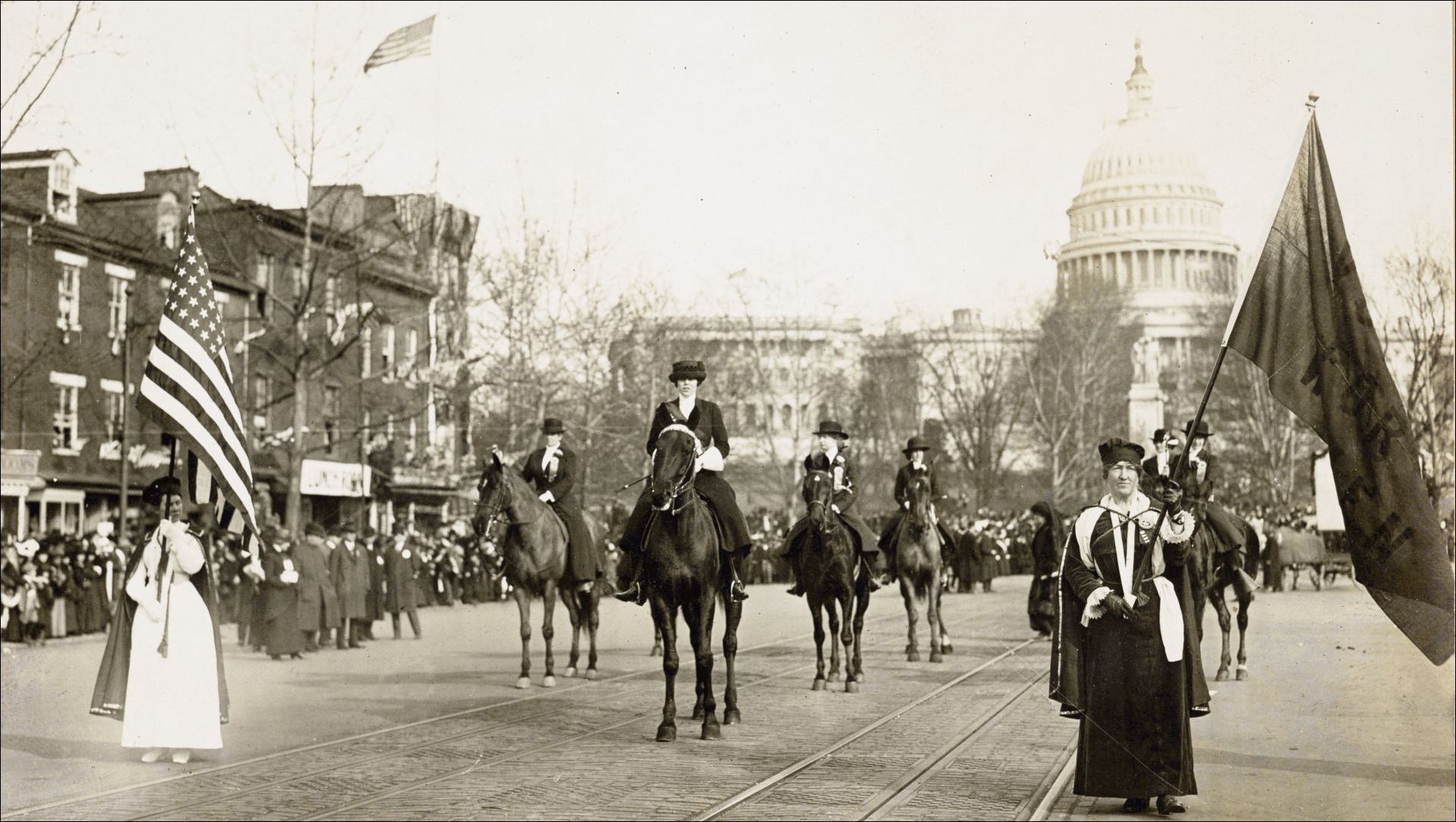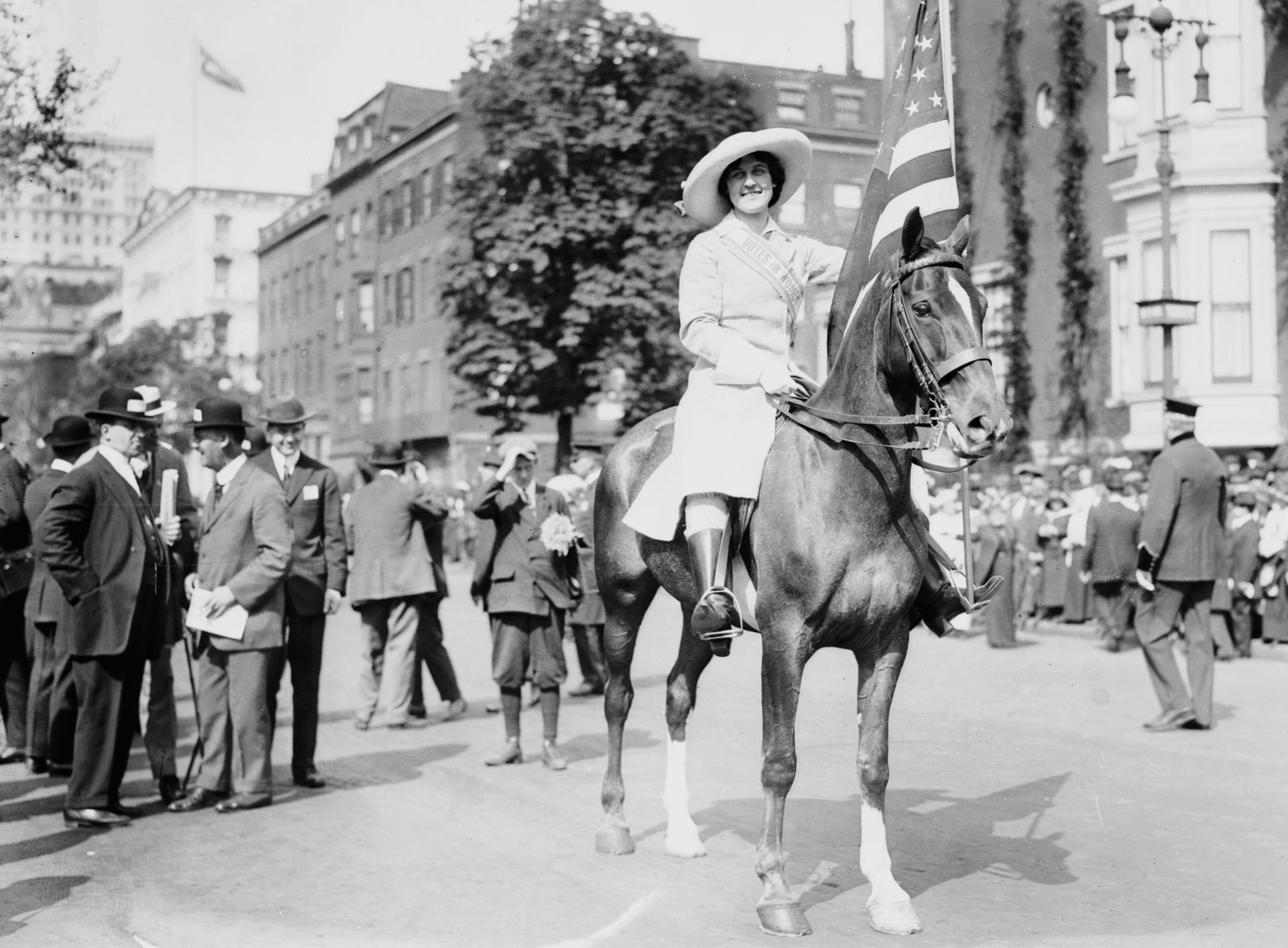Authors:
Historic Era: Era 7: The Emergence of Modern America (1890-1930)
Historic Theme:
Subject:
Spring 2024 | Volume 69, Issue 2


Authors:
Historic Era: Era 7: The Emergence of Modern America (1890-1930)
Historic Theme:
Subject:
Spring 2024 | Volume 69, Issue 2

Editor's Note: Elisabeth Griffith is the author of two acclaimed books on women's history, Formidable: American Women and the Fight for Equality: 1920–2020 and In Her Own Right: the Life of Elizabeth Cady Stanton. She has a PhD in history.
On March 3, 1913, women chosen for their good looks and equestrian skills led the first women’s march in Washington, D.C. on the day before Democrat Woodrow Wilson’s presidential inauguration. First came the grand marshal, May Burleson, a Texas beauty wearing a black habit and riding a black horse. Next rode a stunning medieval-style queen, her hair unbound, her cape flowing; she wore Cossack pants and tall kid boots, as she sat astride a white steed, a “grand ecstasy in white,“ according to one reporter. She was New York labor lawyer Inez Milholland, annoyed to be known more for her beauty than her brains. A banner declared the parade’s purpose: “We demand an amendment to the Constitution of the United States enfranchising the women of this country.“

Three heralds, four mounted brigades, nine bands, 24 floats, and 5,000- 8,000 women followed. They lined up in sections and columns of four across. Instructed “to march steadily in a dignified manner and not to talk or wave," they planned to proceed down Pennsylvania Avenue from the Capitol to the Treasury Building, then to the White House, and on to the newly completed Continental Hall on 17th Street.
They barely made it four blocks before a drunken mob stampeded into the street. Still, the demonstration was deemed a brilliant success. As the front page of the Washington Post declared, “Woman’s Beauty, Grace, and Art Bewilder the Capital; Miles of Fluttering Femininity Present Enhancing Suffrage Appeal. “
The event was the brainstorm of Alice Paul, a diminutive Quaker academic from Camden, New Jersey. After graduating from Swarthmore with a biology degree in 1905 and enrolling in a master’s program at the University of Pennsylvania, she moved to England for further study.
Enthralled by the British suffragist Cristobel Pankhurst’s speeches, Alice Paul joined the rallies and riots organized by Cristobel’s mother, Emmeline Pankhurst, head of the Women’s Social and Political Union (WSPU), the radical branch of the British suffrage movement. Millicent Fawcett led the more-moderate National Union of Women’s Suffrage Societies, with 50,000 members. Her statue, the only one of a woman in London’s Parliament Square, was erected in 2018 to mark the centennial of suffrage for British women. In 1918, women had to be university graduates,